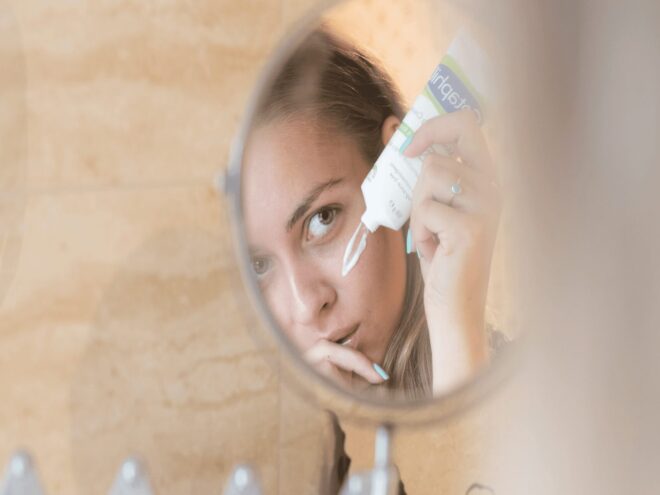Wellness • 10/02/2023
What Is Breathwork and Four Types To Try

Revivalist is a reader-supported endeavor and our posts may contain affiliate links. When you buy through links on our site, we may earn an affiliate commission.
Breathwork is rooted in yoga and is a centuries-old practice. It refers to the various techniques used for conscious breathing to harness the power of respiration to relieve stress, anxiety and other psychological problems. It can also increase focus and it’s considered a form of mindfulness practice. As yoga’s popularity in the West expands, so does breathwork.
What Is Breathwork?
Breathing is second nature to humans. You inhale and exhale without thinking about it. Usually, people have shallow breathing that doesn’t utilize the lungs’ full capacity.
On the other hand, breathwork involves monitoring each breath going in and out of the respiratory system. Simply put, you breathe in and out with all your awareness using a rhythm. Depending on the technique, you may combine shallow, deep, rapid and slow breaths.
How Does It Work?
There’s a science to breathing. A neuropsychologist at the University of Washington revealed that irregular and shallow breathing is associated with stress and anxiety. Shallow breathing limits the expansion and contraction of the chest cavity, reducing the body’s air and oxygen.
Deep or diaphragmatic breathing is the most commonly practiced type of breathwork. You do it by breathing deeply, filling the lungs with air and exhaling it slowly. It’s beneficial if you’re stressed and anxious. It can also enhance your focus and lower pain levels.
Besides diaphragmatic breathing, there are other techniques you can do on your own or facilitated by an instructor.
Why Do People Do Breathwork?
The purpose of breathwork is to typically regulate stress. You’ll often hear people say to take deep breaths when stressed. It indeed helps you feel calm.
The breath is part of the body’s stress response. If you’re anxious and stressed about a marketing presentation or an upcoming major exam, your breathing becomes shallow. Similarly, you can induce panic in someone by letting them take faster, shallow breaths.
There’s an autonomic nervous system in the body that regulates involuntary actions, such as heart beating and digestion. It’s divided into the sympathetic system, which controls the fight-and-flight response, and the parasympathetic system, which controls the rest-and-relaxation response.
Deep breathing works in favor of the relaxation response. Therefore, breathing deeply can help tone down the sympathetic nervous system and lower stress and anxiety.
How To Do Breathwork?
There are various types of breathwork in yoga, varying from easy to advanced. Some of these you can do by yourself at home. Others require a facilitator for a group session.
1. Dirga Pranayama or Three-Part Breath
One benefit of pranayama is that it reduces the incidence of asthma attacks and the medication needed for treating it. It has a significant effect on the heart-lung functions.
Pranayama itself has multiple forms. One common technique is called Nadi Shodhana or Alternate Nostril Breathing. Here are the steps to do it.
1. Deeply breathe in and out once.
2. Find a comfortable sitting position.
3. Press your right nostril with your thumb to cover it.
4. Breathe in through the left nostril, hold your breath and close it with your ring and pinky fingers.
5. Remove your thumb on your right nostril and exhale through it.
6. Repeat the process, but inhale through the right nostril while the left nostril is covered with your pinky and ring fingers.
7. Hold your breath, open the left nostril and exhale.
8. Alternate between nostrils for inhaling and exhaling.
9. Repeat the cycle three to five times.
2. Rebirthing or Conscious Energy Breathing
The concept of rebirthing stems from the idea that humans carry the trauma of their birth experience. The goal of this technique is to relieve the trauma stored in the body, ultimately achieving peace.
Unlike pranayama, this technique is performed with a trained instructor due to its intensity level. Here are the steps you can expect with a single session.
1. Lie down comfortably and cover yourself with a blanket. Close your eyes.
2. Take shallow inhales and exhales through the nose without any breaks. This is called a circular breathing technique.
3. As the session progresses, the breath will become deeper. It continues for one to two hours.
As this goes on, you may experience shifts in the body, like crying and wailing to release repressed memories.
3. Hasya Yoga or Laughter Yoga
People believe laughter is the best medicine. Hasya yoga is a playful breathing technique that encourages you to laugh. It’s a new technique created by Madan Kataria, a physician in India, in 1995. The session is performed in groups, often with an instructor who directs the process.
Here’s an overview of the process.
1. The session typically starts with warm-up techniques, such as stretching, chanting and eye contact with other participants. It helps encourage a sense of playfulness to everyone.
2. Following this, participants do pranayama breathing. Laughter involves deep breaths and doing pranayama helps prime the lungs.
3. You will then chant in sync and say ho-ho or ha-ha-ha out loud.
4. Afterward, you will do the lion laughter exercise by holding your hand, like a lion’s paws, then sticking your tongue out and laughing loudly.
5. The facilitator will instruct you to do other playful exercises.
Besides easing stress, laughter yoga also lowers the risk of depression and anxiety, leading to better sleep and lower blood pressure.
4. Holotropic Breathwork
This breathing technique is used both in therapy and spiritual practices. As it can relieve stress and open up another state of consciousness, it’s an excellent technique that appeals to people who feel stuck.
It was developed by Stanislav and Christina Grof to achieve an altered state of consciousness without using drugs. A trained instructor organizes the group session.
1. The facilitator will pair you with another person. In a pair, there’s a “breather,” and the other is the “sitter.”
2. The breather does the holotropic breathwork while lying on a mat. Meanwhile, the sitter supports the breather and ensures they’re safe during the session.
3. The facilitator gives directions on when to increase the speed and rhythm of breathing. The breather deeply inhales and exhales faster, while the sitter pays attention to the changes in the breather’s body and looks for signs of hyperventilation.
4. During the session, the facilitator plays repetitive music that encourages an altered state of consciousness.
5. Each session could last two to three hours. The breather might move or make any sounds while their eyes are closed.
6. After the session, the participants draw mandalas describing their experience. The breathwork aims to bring issues to the surface so they can be addressed.
7. Sitters and breathers change roles for future sessions.
The entire experience of holotropic breathing can be overwhelming. The participants can stop in the middle of the session if the sensations are too much to handle.
When Not To Do Breathwork
Breathwork techniques vary from easy to advanced. Some of these can have powerful effects but also associated risks. For instance, holotropic breathwork can help relieve stress and increase self-awareness, but there could be the risk of hyperventilation and distress to those with existing psychotic symptoms.
Get a green light from your doctor before doing any breathwork to avoid complications or unpleasant side effects. If it’s safe, start easy. Find a breathwork book or search for videos with the step-by-step process.
Don’t do breathwork if you have the following conditions:
- Cardiovascular problems
- High blood pressure
- Panic attacks
- Psychosis and seizures
- Recent surgery or injury
- Conditions that require regular medications
Only Do Breathwork if It’s Confirmed Safe
Breathwork has some impressive benefits. You can include it in your daily routine as part of a mindfulness practice whenever you feel stressed or anxious. Start with easy techniques, like pranayama, so it’s not overwhelming.
More importantly, always consult your doctor before venturing into any breathwork. If you have heart or respiratory disease, follow your doctor’s recommendation to avoid complications.
Subscribe to Our Weekly Newsletter
We would love to connect deeper with you!


